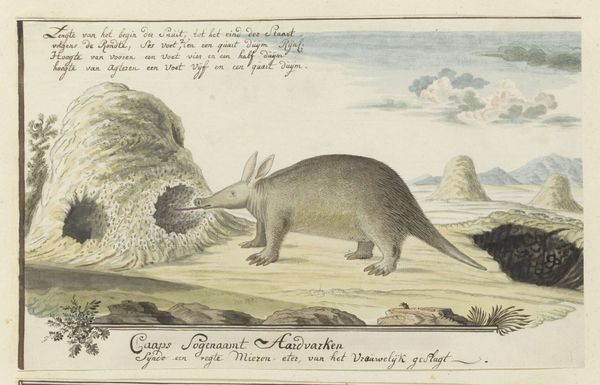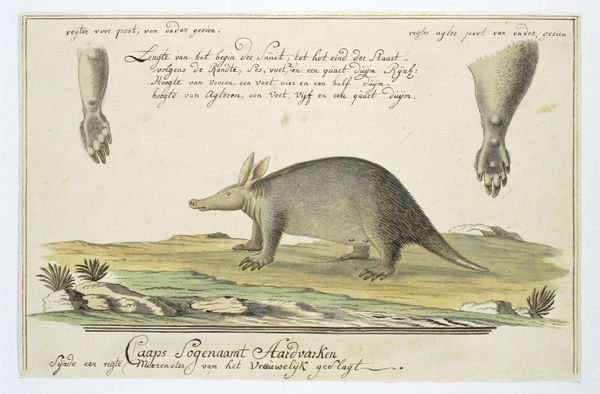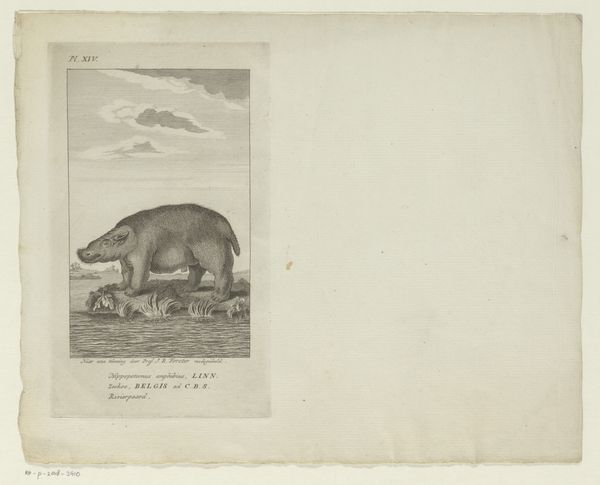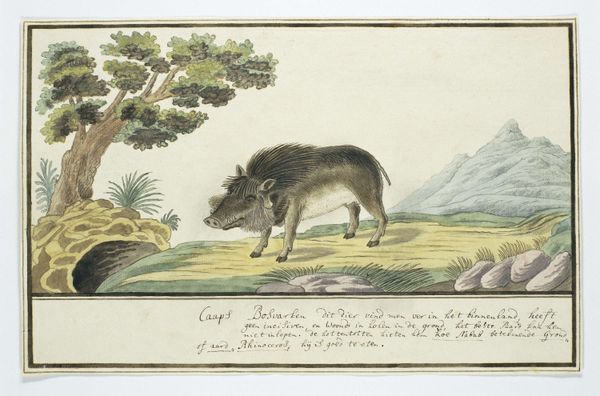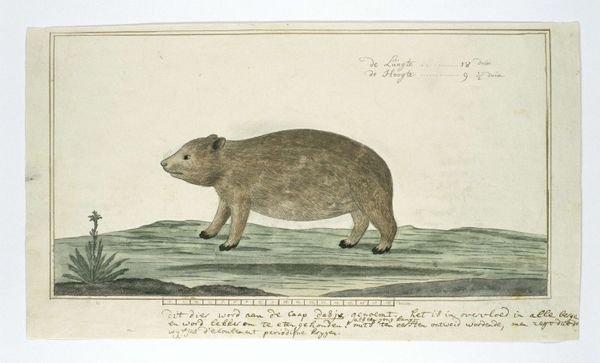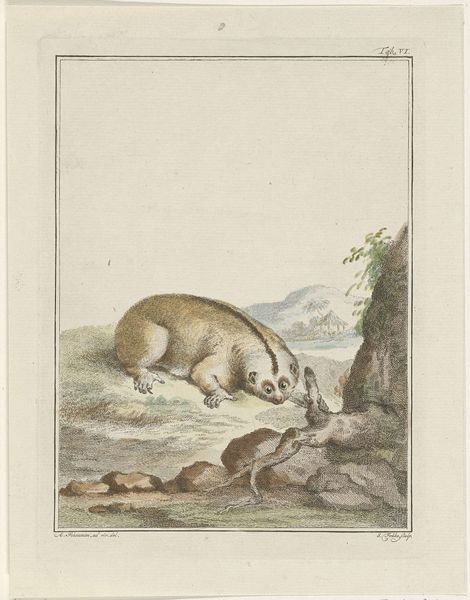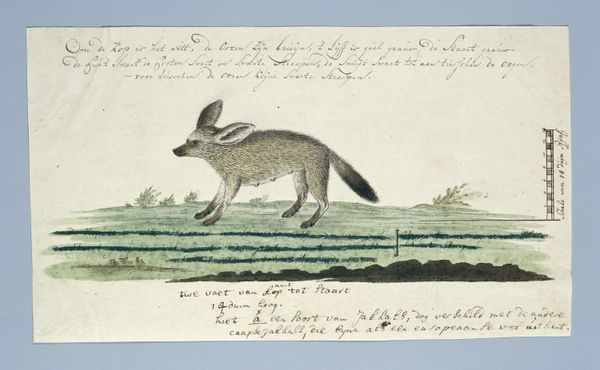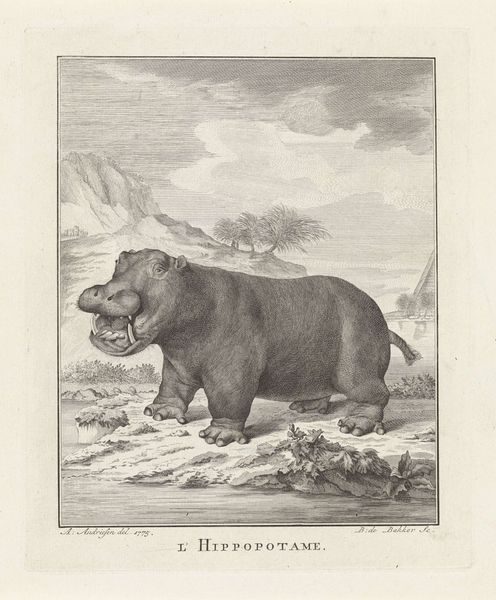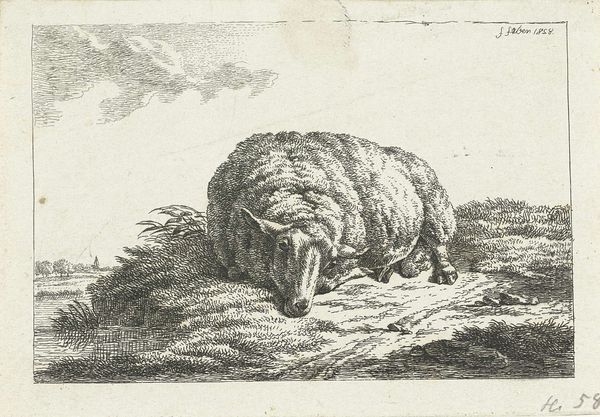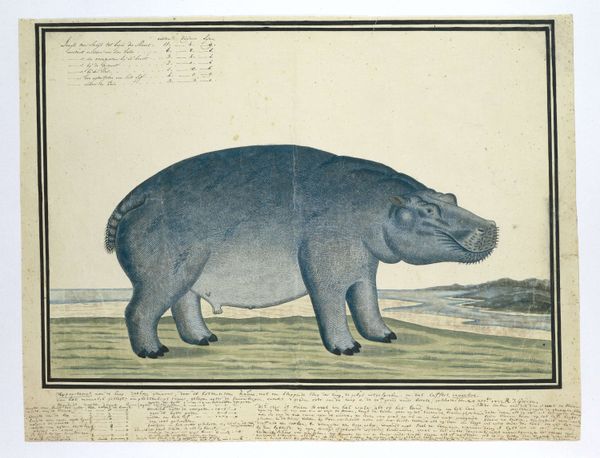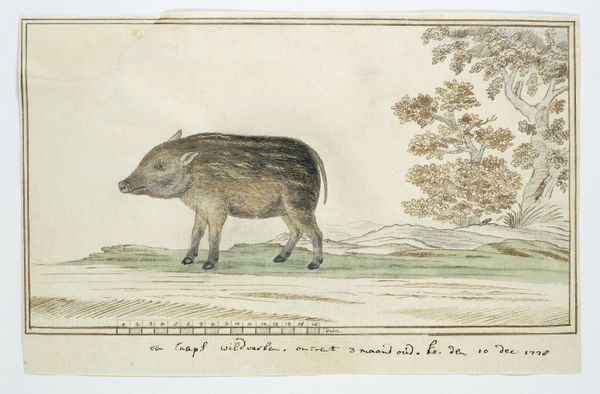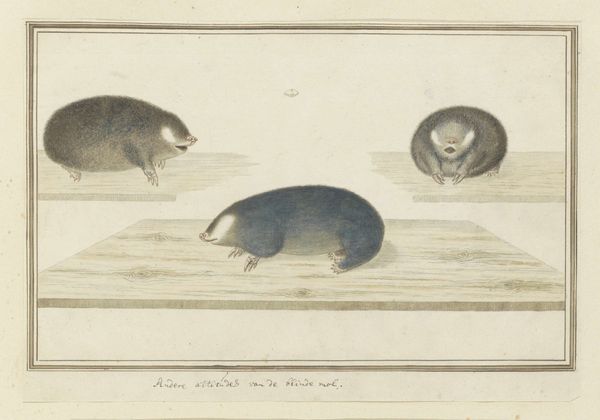
drawing, watercolor
#
drawing
#
aged paper
#
toned paper
#
light pencil work
#
animal
#
pencil sketch
#
sketch book
#
landscape
#
personal sketchbook
#
watercolor
#
sketchbook drawing
#
watercolour illustration
#
sketchbook art
#
watercolor
Dimensions: height 660 mm, width 480 mm, height 224 mm, width 351 mm, height 173 mm, width 341 mm
Copyright: Rijks Museum: Open Domain
Curator: Here we have Robert Jacob Gordon's "Orycteropus afer (Aardvark)", possibly created between 1777 and 1786. It's a drawing, primarily rendered in watercolor and pencil. Editor: My first impression? There's a lovely, gentle quality to the image. The aged paper contributes to a sense of history, while the soft watercolors create a serene landscape for this curious creature. Curator: Absolutely. Gordon was, of course, a military man and explorer in service of the Dutch East India Company. Drawings such as these reflect the colonial project and its relationship to natural history and scientific study. How might his positionality have influenced the art making? Editor: A vital consideration. The artwork offers a visual inventory of the region's fauna and speaks to broader questions of taxonomy. These visual representations also serve a political purpose; namely the creation of knowledge intended for colonial administration. Curator: I agree, but I am especially drawn to the aardvark itself, which occupies the center of the frame and establishes itself as the focal point of a complex ecological dynamic. It’s not just a passive object; it embodies both vulnerability and resilience. Editor: You make a salient point. It has almost human eyes and the foreshortening gives the figure the sense of almost leaping out of the page towards the viewer. How might audiences interpret this illustration, or other works in the book, from the point of view of indigenous ecological epistemologies? Curator: These images function both within scientific discourse as well as operating as documents that represent intercultural exchange and reflect interactions, often unequal, between colonizers and the colonized. Editor: So as we study and display artworks such as this drawing of an aardvark, we need to attend to the complex context from which it originated. With new strategies of displaying historical material alongside contemporary perspectives, museums and other organizations can do their part to redress colonial power dynamics. Curator: Agreed. Reflecting on Gordon’s drawing has only deepened my appreciation for the layering of art, science, and the legacy of colonial power structures. Editor: Likewise. These images continue to serve as compelling artifacts in a continued critique of empire and exploitation.
Comments
No comments
Be the first to comment and join the conversation on the ultimate creative platform.
